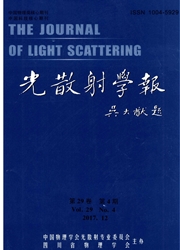

 中文摘要:
中文摘要:
利用荧光发射光谱和紫外-可见吸收光谱,研究了新型含芘荧光探针分子芘丁酰谷氨酸(PLE)和芘甲酰谷氨酸(PYE)与溶菌酶(Lyso)和牛血清白蛋白(BSA)的相互作用,分析了结合过程和机理。结果显示:不同间隔链长度的探针分子在与Lyso作用时,表现的光谱性质差别不大,这主要是由于探针分子结合到了Lyso的表面;而不同间隔链长度的探针分子在与BSA作用过程中,却表现不同的光物理性质,这可能是探针分子作用于Ⅸ泌空腔时其结合位点或者结合方式的不同引起的。目前的研究对揭示蛋白质分子的识别位点和定位切割具有重要的意义。
 英文摘要:
英文摘要:
Fluorescent emission and UV - visible absorbance spectroscopy have been applied to study the interaction of new kinds of pyrene- containing fluorescent probes (PLE and PYE) with proteins (Lyso and BSA), and the nature and process of binding have also been investigated. The results demonstrate that the interactions between Lyso and probes with different interval length give homologous properties, where they bind to Lyso in the hydrophobic area on the surface; The interactions of them and BSA indicate distinct photophysical properties, which is due to the differences of binding site and model in the cavity of BSA. These results possess important significance for the recognition of binding site and the site - specific photoeleavage of proteins.
 同期刊论文项目
同期刊论文项目
 同项目期刊论文
同项目期刊论文
 期刊信息
期刊信息
